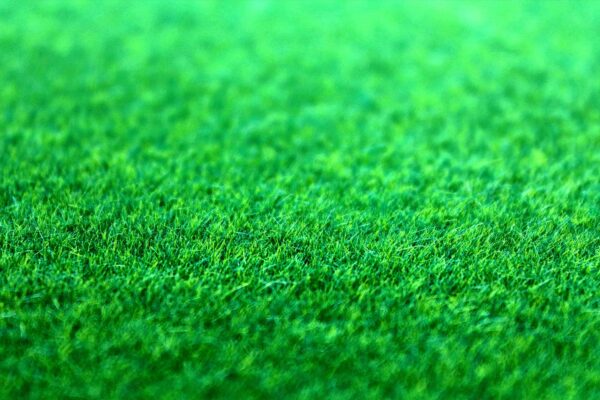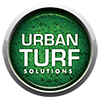Comparing Natural Grass vs. Artificial Grass
When choosing natural grass vs artificial grass it’s essential to weigh up each option’s pros and cons, including maintenance requirements, lifespan, cost, and environmental impact. Each has its unique qualities, and the choice often depends on individual circumstances, preferences, and needs.
Maintenance is one of the most significant differences between natural and artificial grass. Natural grass demands a considerable amount of care to keep it looking its best. This involves regular mowing, watering, and fertilising, as well as dealing with issues such as weeds, pests, and diseases. Over-seeding may be required to keep it looking lush and full, and you may also need to deal with thatch build-up and aeration. Natural grass lawns can become patchy or brown during periods of high heat or drought, requiring additional care and resources to restore them.

On the other hand, artificial grass requires far less upkeep. While it isn’t completely maintenance-free, the tasks involved are usually simpler and less time-consuming. Routine cleaning, occasional rinsing, and removing leaves and debris can help keep your artificial lawn looking pristine. There is no need for mowing, fertilising, or watering, saving you time and effort. High-quality artificial grass is also designed to resist UV damage, so it stays green and vibrant all year round, regardless of weather conditions.
In terms of lifespan, artificial grass generally lasts longer than natural grass. While a well-maintained natural grass lawn can remain in good condition for many years, it is subject to natural cycles of growth and dormancy and can be damaged by heavy foot traffic, pets, or adverse weather conditions. An artificial grass lawn, on the other hand, can last up to 15-20 years with proper care, depending on the quality of the product and the conditions it’s subjected to.
Cost is another factor to consider. The initial cost of installing an artificial grass lawn is higher than seeding or sodding a natural grass lawn. However, the total cost should also factor in ongoing maintenance costs. These are generally much higher for natural grass, with costs for watering, fertilising, mowing, and other upkeep tasks. Artificial grass, on the other hand, requires less maintenance, so while the upfront cost may be higher, the overall expenditure can be lower over the life of the lawn.
It’s important to consider the environmental impact of both options. Natural grass lawns contribute positively to the environment by producing oxygen and sequestering carbon. However, maintaining a natural grass lawn can have environmental costs, particularly in terms of water usage and the use of fertilisers and pesticides. Artificial grass requires no watering or chemicals for upkeep, making it a more sustainable choice in areas prone to drought. However, it is made from synthetic materials and is not biodegradable.
The decision between natural and artificial grass is a personal one, and what works best for one person may not work for another. Each has its advantages and disadvantages. For instance, if you love gardening and don’t mind spending time on lawn care, a natural grass lawn might be the right choice. If you’re looking for a low-maintenance, durable, and evergreen solution, artificial grass could be your best bet. The key is to consider your specific situation and needs before making a decision.
